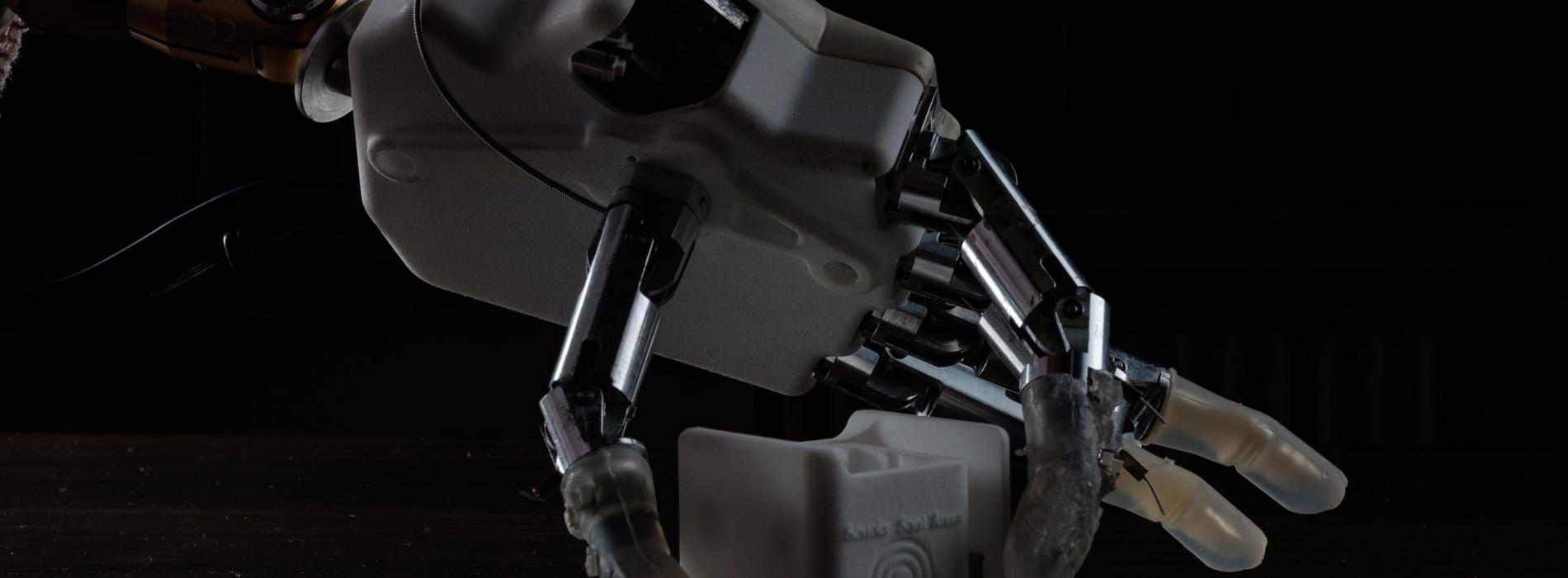
 News
News
The bionic hand
Silvestro Micera, the Bertarelli Foundation Chair in Translational Neuroengineering at EPFL and Professor at the Sant' Anna School of Advanced Studies, was one of the keynote speakers of the conference “The bionic hand: from scientific intuition to the results of the first ten years of experimentation on amputees in Italy” that took place this morning in Rome at Accademia Nazionale Dei Lincei, the oldest academy worldwide. The conference focused on the scientific, technological and translational aspects of research on robotic hand prostheses with direct interfaces to the peripheral nervous system, which allow the recovery of proprioceptive and tactile sensations. These sensations are an essential functional prerequisite for the re-learning of sensorimotor control of manual skills.
The last ten years of scientific fertility and human translation have been framed in a broad scenario, starting from the origins of frontier research ideas on bio-robotics and bionics, the creation of the first tactile sensors and the first prototypes of robotic sensorized fingers and hands, up to the application on amputees of prostheses with bidirectional interfaces directed towards the peripheral nervous system and ending with the presentation of further possible future scenarios and new technological challenges oriented to the development of permanent solutions, fully integrated in the person.
The event is based on the findings published on February 20, 2019 on the journal Science Robotics and are the results of ten years of scientific research coordinated by Silvestro Micera and Paolo Maria Rossini, Director of neuroscience at the A. Gemelli University Polyclinic in Rome.
The scientists managed to produce the first bionic hand that enables amputees to regain a very subtle, close-to-natural sense of touch. The researchers reproduced the feeling of proprioception, which is our brain's capacity to sense the position and movement of our body during and after movement even in the dark or with our eyes closed. By stimulating the nerves in the amputee’s stump, in fact, the bionic hand provides sensory feedback to the patients in real time as if it was a natural hand.
The translation of research in the field of bio-robotics and bionics comes from the intuition of putting in the same team bioengineers, neurophysiologists, surgeons, physiatrists, neuropsychologists, philosophers of science, bioethics and various other skills in order to integrate synergistically basic knowledge and advanced technologies, with a clear convergence and fusion between the different disciplines.
The contribution of prestigious European research centres such as the Universities of Cagliari, Montpellier and Freiburg (Germany) and subsequent funding from the European Commission, the Bertarelli Foundation, the National Centre of Competence in Research (NCCR Robotics) as well as targeted research from the Ministry of Health, was fundamental.
Photo: © Luca Rossini